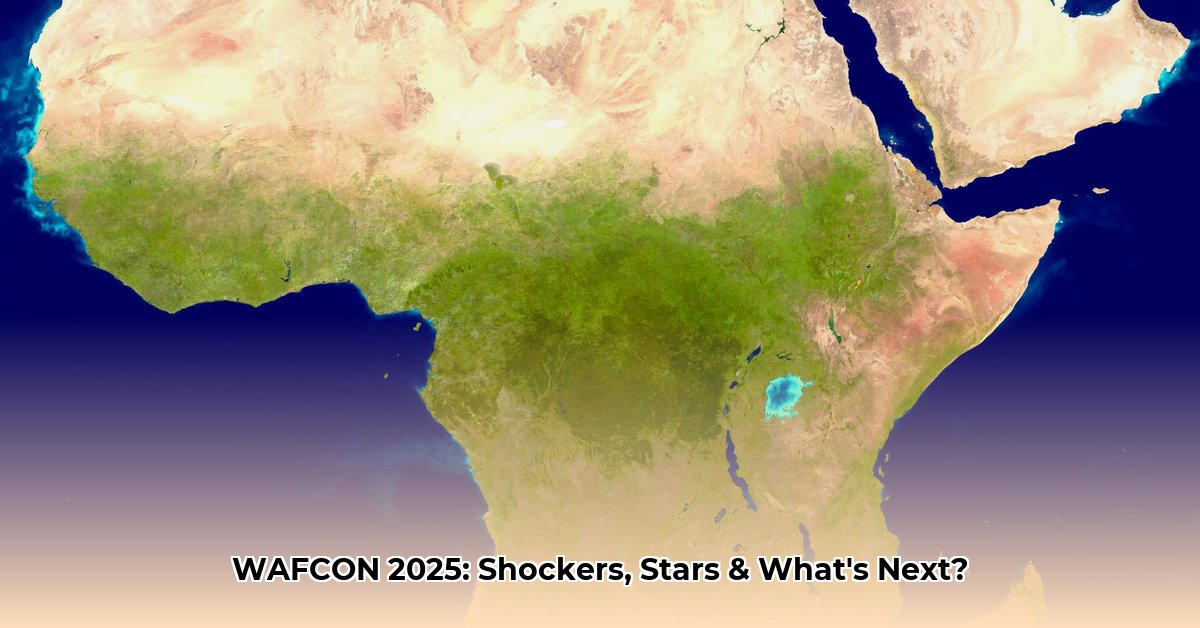
The 2025 Women's Africa Cup of Nations (WAFCON), held in Morocco, delivered a tournament brimming with unexpected twists, thrilling victories, and a clear indication of the burgeoning potential of women's football across the continent. More than just a competition, WAFCON 2025 served as a powerful barometer, highlighting both the impressive strides made and the persistent challenges that lie ahead. Did the back-to-back hosting in Morocco pay off? The answer, judging from the electrifying atmosphere and the on-field action, is a resounding yes.
Unexpected Twists and Turns: A Level Playing Field?
The knockout stages were nothing short of dramatic. Penalty shootouts became commonplace, a testament to the increased competitiveness across the board. Ghana's stunning upset over Algeria, South Africa's nail-biting triumph over Senegal, and Nigeria's dominant display against Zambia weren't just wins; they were statements. Each match revealed a fascinating evolution in the competitive landscape. But has the playing field truly levelled? While the close calls suggest progress, significant disparities remain. "The increase in close matches reveals an improved standard,” says Dr. Nomusa Mthethwa, Sports Psychologist at the University of Cape Town. "But some regional imbalances still persist.”
A Tale of Two (and More) Regions: Dominance and the Pursuit of Parity
The tournament underscored the continued strength of North and Southern African teams. Morocco and South Africa, regional powerhouses, displayed exceptional skill. Nigeria, a perennial contender, reaffirmed its status. However, what about the other regions? Their performances raise crucial questions. Are they catching up, or falling further behind? A deeper analysis is needed to fully understand the regional dynamics at play and pave the way for a more equitable competition. “This tournament highlighted the need for targeted development initiatives in under-resourced regions,” comments Mr. Thabo Moloi, CAF Development Officer. This is crucial for the future of African women's football.
Beyond the Scorelines: Addressing Inconsistent Performances
WAFCON 2025 showcased more than just final scores. The inconsistencies within certain teams' performances – exemplified by Zambia's strong start followed by a disappointing quarter-final exit – highlighted crucial areas needing attention. The tournament has clearly revealed the necessity for more robust team strategies and player development initiatives. What lessons can the less successful teams learn from the top performers? This critical question forms the bedrock of future growth. "We saw a mix of high and low points in many teams' performances," notes Ms. Lerato Kganyago, sports commentator for SABC. "Consistency is key to reaching the next level."
A Legacy in the Making: The Tournament’s Broader Impact
The ripple effects of WAFCON 2025 extend far beyond the final whistle. The tournament has the power to shape player development schemes, attract sponsorships, and drive infrastructure improvements. Morocco, as the host, is poised to receive a significant boost in tourism and investment. CAF's strategic use of data from this tournament will be critical in planning future investments in women's football. “WAFCON 2025 has showcased the potential for economic growth and social impact,” adds Professor Mandla Msimang, Economist at University of Stellenbosch. “This must be capitalised upon.”
The Road Ahead: Navigating Challenges and Embracing Opportunities
The 2025 Women’s Africa Cup of Nations was a pivotal moment. It underscored both the progress made and the continued challenges facing African women's football. The heightened competitiveness is encouraging, but persistent inequalities remain. The future of WAFCON, and indeed African women's football, is brimming with potential. But will this potential be realised? This hinges on sustained investment, strategic planning, and unwavering support from all stakeholders.
Key Takeaways: A Concise Summary
- Increased Competitiveness: The tournament showcased a significantly improved competitive balance, although regional disparities persist.
- Economic Impact: The tournament generated substantial revenue and attracted significant investment, boosting the profile of women's football.
- Development Needs: The need for sustained investment in infrastructure, player development, and coaching programs is paramount.
The journey continues. Further research is vital to fully grasp the long-term consequences of this tournament and its impact on the wider development of women's football across Africa. The future is bright, yet nurturing this potential demands dedicated collaborative effort.